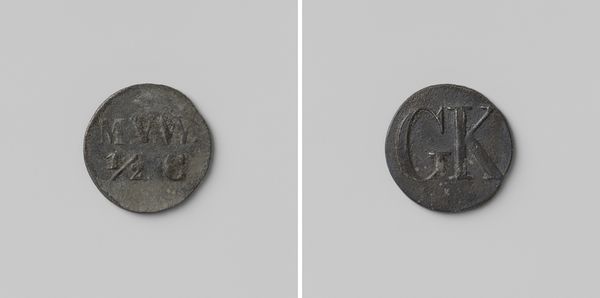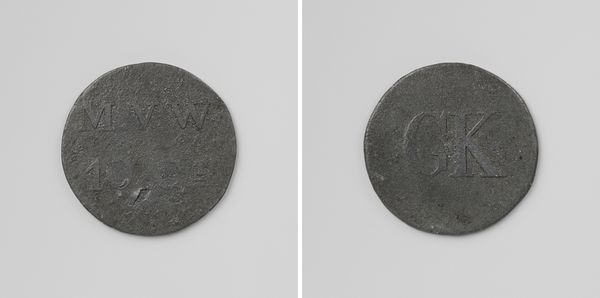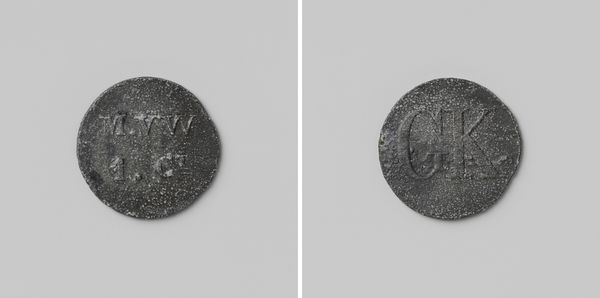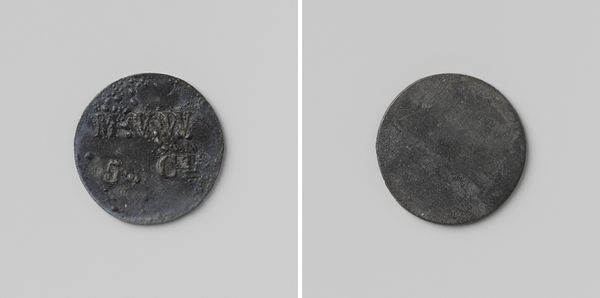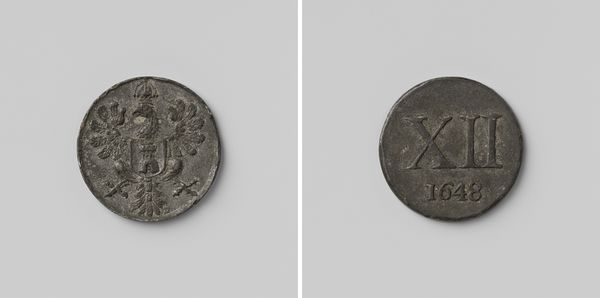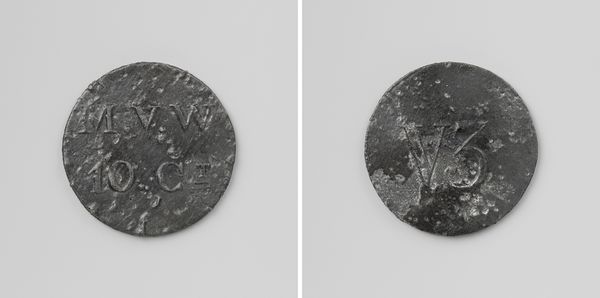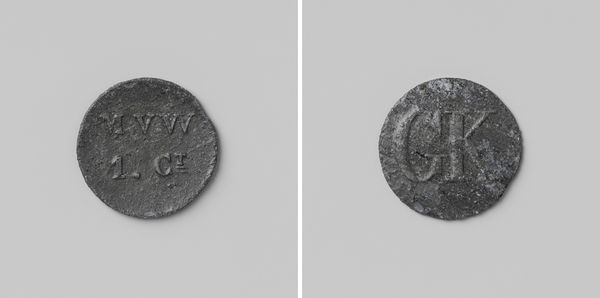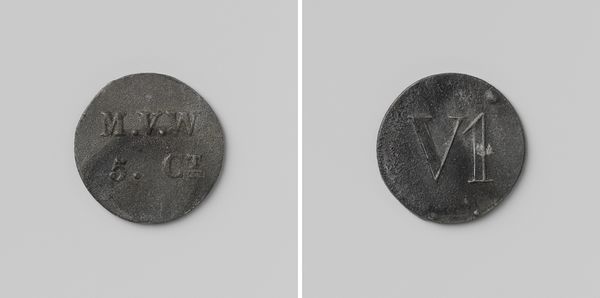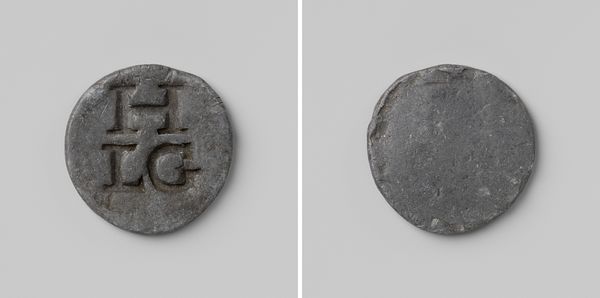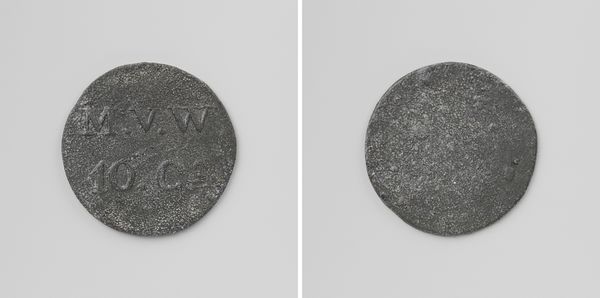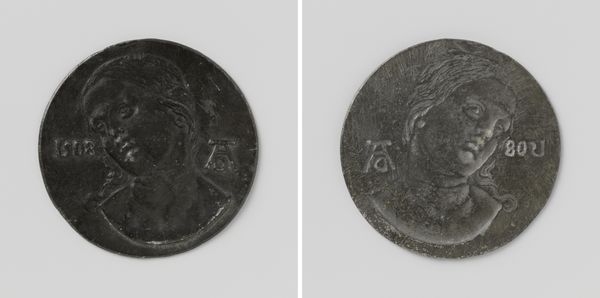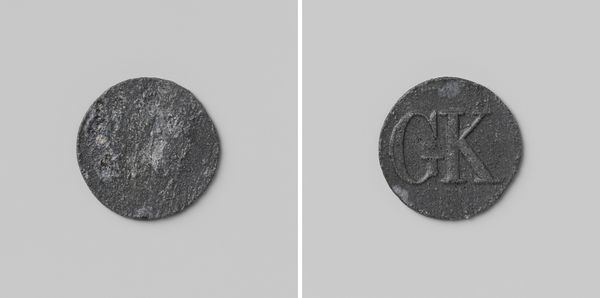
Tweede gesticht van de strafkolonie Veenhuizen, huismunt geslagen op last van de Maatschappij van Weldadigheid ter waarde van vijf cent 1818 - 1859
0:00
0:00
print, metal, sculpture
#
dutch-golden-age
# print
#
metal
#
sculpture
#
sculpture
Dimensions: diameter 2.2 cm, weight 2.51 gr
Copyright: Rijks Museum: Open Domain
Curator: Here we have a fascinating object—a house coin. Specifically, this piece was minted for the penal colony in Veenhuizen between 1818 and 1859. The Maatschappij van Weldadigheid, or Society of Benevolence, commissioned these coins for internal use. Editor: There’s a starkness to this little coin that really grabs me. It's not made with the usual precision we see in currency. You can feel the roughness, the imprint feels very manual. What was it made from, iron? Curator: Precisely, these were typically struck in iron. You are quite perceptive to pick up on that! The metal itself underscores a kind of disciplinary austerity. Editor: Right. So, if it’s for internal use only, it reflects a kind of total control and economic ecosystem inside the colony's walls. The inscriptions M.V.W. and ‘5 C’ for 5 cents—I suppose it represents some pitiful internal purchasing power? Curator: Indeed. Think of the layers of power at play—the society, which initially had very utopian, benevolent aims—creating these environments to uplift impoverished people with structure, work, education... then the material manifestation is something like this coin. Editor: Which becomes, ironically, a symbol of control. It strips individuals of agency, replacing real currency with a token inside a closed system. Did these coins contribute to an identity that marked someone as separate or outcast? Curator: Undeniably, this coinage is deeply tied to social class and justice systems, perpetuating narratives about the laboring underclass, who were often seen as inherently different or "deviant". Editor: So the very means of exchange becomes part of a system reinforcing power structures, reminding residents daily of their dependence on the institution, the value they can trade being severely controlled and limited to what they do inside its wall. Curator: Absolutely, thinking about labor, the social function of incarceration at this time… It allows us to see parallels with our current systems too. Editor: And from a small, somewhat crude metal disk, such heavy meaning! Considering the work and metal involved I suppose this is one of many artifacts demonstrating not only societal inequalities but an opportunity for craft behind prison walls, too. Thank you for elucidating the socio-economic implications of this currency of constraint. Curator: My pleasure, looking through material culture often gives clues, telling the stories and power behind human relationships and institutional organization.
Comments
No comments
Be the first to comment and join the conversation on the ultimate creative platform.
